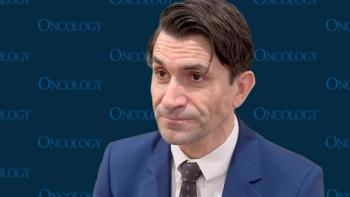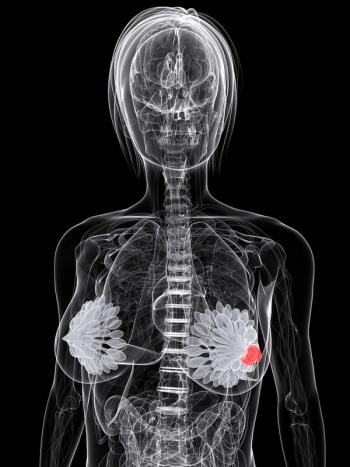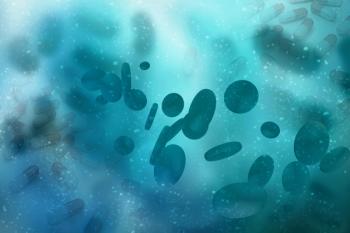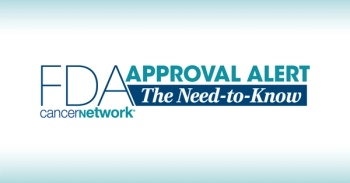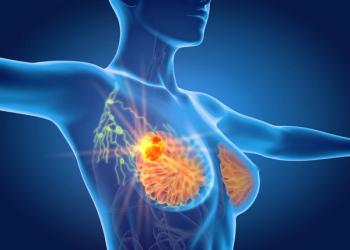
Oncology NEWS International
- Oncology NEWS International Vol 10 No 10
- Volume 10
- Issue 10
Post-HAART HIV+ NHL Patients Benefit From Chemotherapy
SAN FRANCISCO-HIV-positive patients with non-Hodgkin’s lymphoma (NHL) should not be excluded from chemotherapy or given a limited-dose regimen, Joseph Sparano, MD, said at the 37th Annual Meeting of the American Society of Clinical Oncology (ASCO abstract 1172).
SAN FRANCISCOHIV-positive patients with non-Hodgkin’s lymphoma (NHL) should not be excluded from chemotherapy or given a limited-dose regimen, Joseph Sparano, MD, said at the 37th Annual Meeting of the American Society of Clinical Oncology (ASCO abstract 1172).
He reported that failure-free survival and overall survival rates improved in these patients after the introduction of highly active antiretroviral therapy (HAART).
Investigators from the Eastern Cooperative Oncology Group had already begun a study of infusional chemotherapy for patients with HIV-associated NHL when HAART became available, said Dr. Sparano, of Albert Einstein College of Medicine and Montefiore Medical Center, Bronx, New York. Consequently, the researchers were able to compare 48 patients who did not receive HAART with 59 post-HAART patients.
"The prognosis of patients with non-Hodgkin’s lymphoma who are HIV positive may not be so dismal," Dr. Sparano told ONI, citing his findings and those from an Italian group that also reported improved outcomes post-HAART. "HIV infection in and of itself should not be a reason to exclude patients with lymphoma from potentially life-saving chemotherapy."
The ECOG trial is closed, but patients continue to be monitored. Both cohorts had a median age of 39. Post-HAART patients presented with a median CD4 count of 227/µL vs 78/µL in the earlier group. Lymphoma was diagnosed at stage III/IV in 82% of pre-HAART and 72% of post-HAART patients.
Treatment Regimens
All received cyclophosphamide (200 mg/m²/d), doxorubicin (12.5 mg/m²/d), and etoposide (VePesid) (60 mg/m²/d) by continuous intravenous infusion for 96 hours plus filgrastim (Neupogen) for six to eight cycles.
The pre-HAART patients also received didanosine (Videx), but antiretroviral therapy was at the discretion of the treating physician in the post-HAART era; most post-HAART patients received combination therapy that included a protease inhibitor.
Study Results
Complete response rates were 46% pre-HAART and 44% post-HAART (not significant). One-year survival was 48% pre-HAART and 60% post-HAART, and median overall survival was 8.2 months and 20.4 months, respectively. The median failure-free survival was 17.4 months for pre-HAART patients and had not been reached at a median follow-up of 31.2 months in the post-HAART patients.
Treatment-related deaths were 10% pre-HAART and 0% for the post-HAART patients (not significant). The proportion of patients experiencing the worst nonhematologic toxicity (grade 3-5) was 88% and 82%, respectively.
Among grade 3-4 toxicities, neutropenia occurred in 85% and 89% of patients, respectively. Anemia rates were 75% and 56%; thrombocytopenia, 75% and 60%; mucositis,13% and 11%; and infection, 27% and 21%.
Dr. Sparano said that he could not explain why the complete response rate did not become higher after HAART. He speculated that the improved survival rates might be related to improved control of lymphoma, making patients less likely to relapse, and to fewer deaths from complications.
A phase III trial is under discussion, he added, to determine whether infusional chemotherapy leads to improved outcomes for patients with HIV-associated NHL.
Articles in this issue
about 24 years ago
High-Dose IL-2 Is Standard in Advanced Renal Cell Cancerabout 24 years ago
RIT Safe, Effective in Elderly and Poor-Prognosis Patientsabout 24 years ago
FDA Approves Xeloda/Taxotere Combination for Advanced Breast Cancerabout 24 years ago
ODAC Recommends Approval of Radiolabeled Zevalinabout 24 years ago
Proteomics Moves From the Laboratory to Clinical Researchabout 24 years ago
Radiotherapy Not Needed in Older Lumpectomy Patients With Early Cancerabout 24 years ago
Raltitrexed + Oxaliplatin for Advanced Colorectal Cancerabout 24 years ago
Mental Fatigue Worries Chemotherapy Patientsabout 24 years ago
Patients Urged to Work With Professionals Against Fatigueabout 24 years ago
NCI Director Resigns to Head New Scientific InstituteNewsletter
Stay up to date on recent advances in the multidisciplinary approach to cancer.


